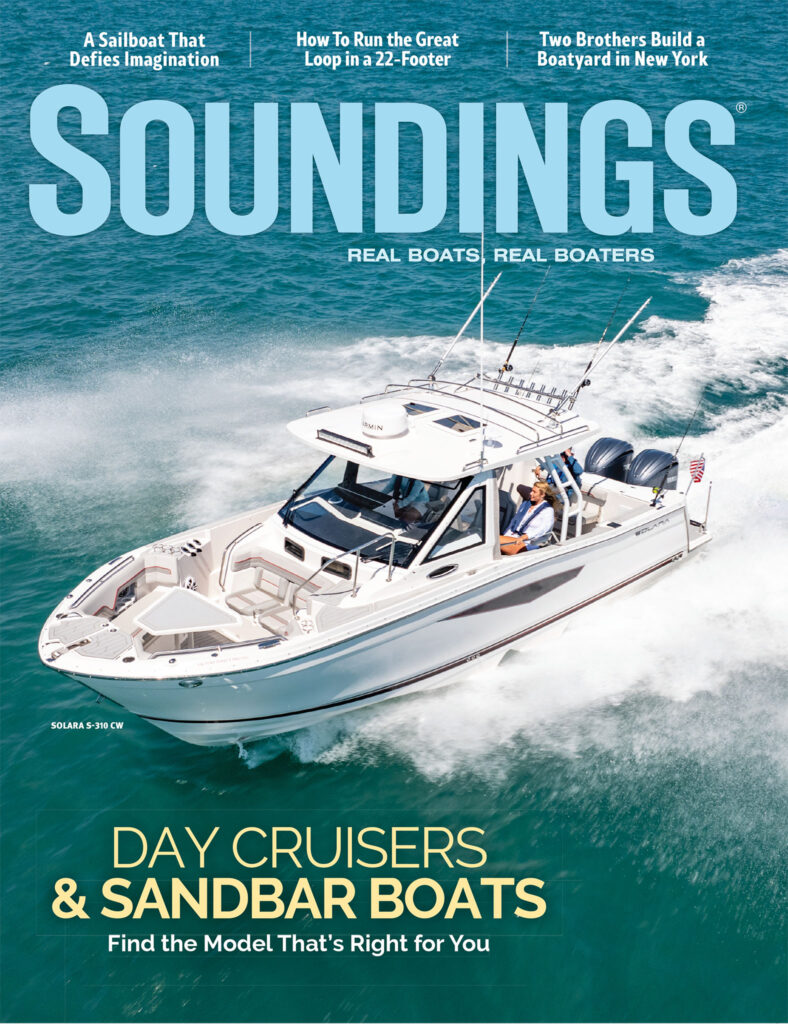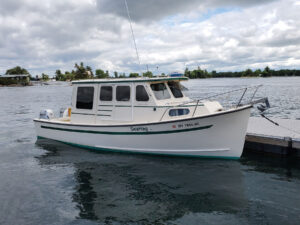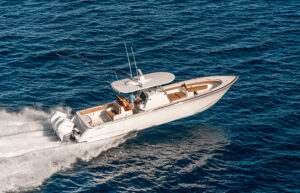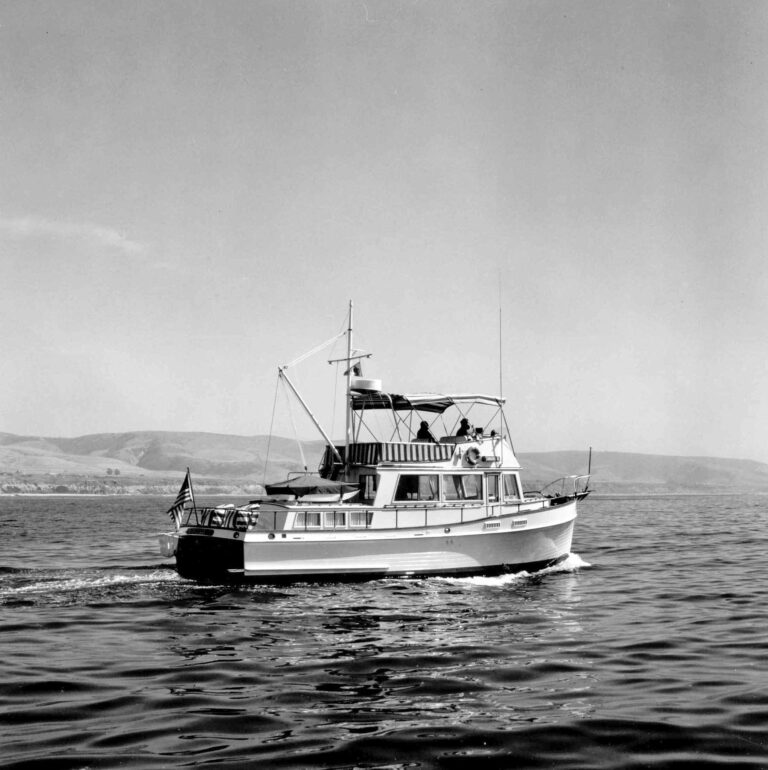
The legendary Vliegende Hollander, or Flying Dutchman, is a fabled ghost ship associated with the 17th-century myth that it is doomed to sail the seas forever and never reach port. The modern Flying Dutchman, while legendary in its own right, is a bit different, considered by many competitive racing sailors to be the fastest double-handed dinghy in the world.
Designed in the Netherlands in the early 1950s by Uus Van Essen and Conrad Gulcher, the Flying Dutchman Class boat, with its then-revolutionary rig, can hit 20 knots on the race course. During its 30-plus years as an Olympic class, the two-person monohull challenged skippers and crew while thrilling audiences across the world.
The centerboard sloop carries a Bermuda rig with a 110-square-foot main sail, a 90-square-foot jib and a big, 230-square-foot spinnaker. Construction methods over the years have run the gamut from cold-molded wood to a composite of carbon fiber and Kevlar. The rig is so adjustable that class historian Henry Clay Ericsson called it “a tuner’s mecca, being chock-full with ropes and pulleys.” The genoa halyard, the shrouds and the mast rake can all be adjusted while sailing.
The design was a departure from the racing dinghy norm in the 1950s, using a trapeze and hiking straps to balance the 290-pound hull going upwind. The physical challenge associated with sailing the Flying Dutchman was part of the allure. “Pure boat speed is the key ingredient for success. The ideal crewman should be tall, heavy, nimble and smart,” writes Ericsson.
Essen and Gulcher set up the Flying Dutchman as an open class, which meant that while the basic boats were all the same, innovations were allowed and even encouraged. As a result, the class helped bring to racing dinghies big-boat equipment, including roller furling, the windward sheet traveler and spinnaker chutes and pole launchers.
More than 10,000 Flying Dutchman have been built over the years, and though no longer an Olympic class, the boats are still raced around the world today, supported by the International Flying Dutchman Class and its U.S. counterpart, Flying Dutchman USA.
This article was originally published in the October 2020 issue.










